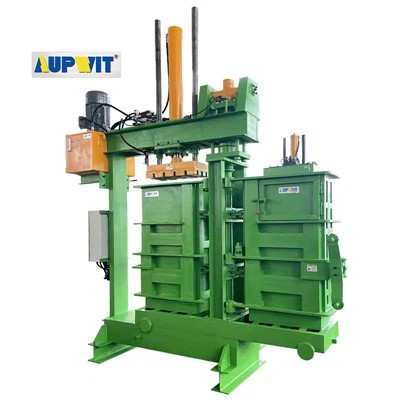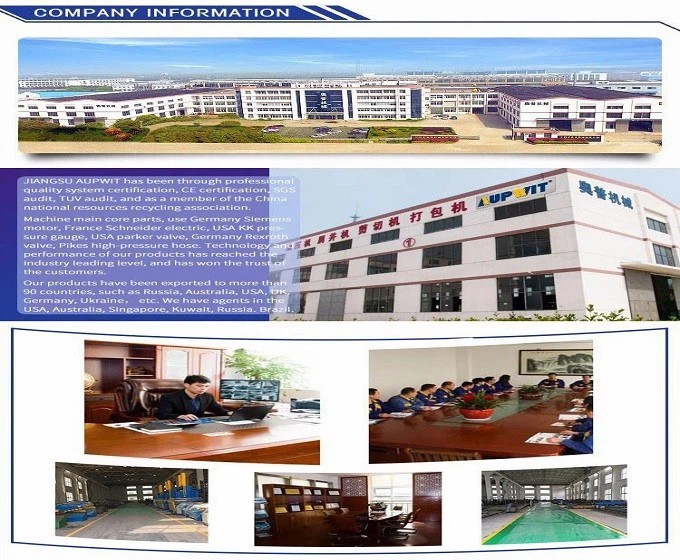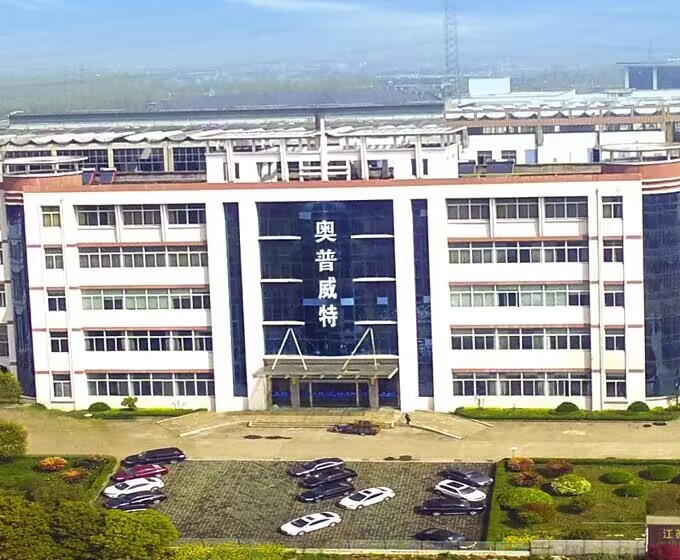Clothes Baler
Textile balers that play an important role in the process of handling the used textiles. It is a key step and cost-effective way to have a textile baler compress and strap the textiles tightly to be a bale form that is easier for storage and transport. With the textile baler, you can not only ensure the safe and secure transport of the products, but also create a safe and neat recycling area for staff, increase the working efficiency and productivity. Our textile balers range from small to large sizes, both horizontal balers and vertical balers, which can meet different kinds of baling purposes. Get to know which is the best baler perfect for your organization's operations. Usually, it depends on the volume of the textile materials that need to be baled, the final estimated bale weight, and whether need wrapping or not. Your space for the baler installation and operation also needs to be considered.
Advantages of Clothes Baler
Efficiency
Clothes balers enable the processing of large volumes of used clothing quickly and efficiently. Reducing labor costs and processing time.
Space optimization
By compacting textiles into dense bales, clothes balers help maximize storage space in recycling
Facilities and warehouses.
Cost effectiveness
Streamlining the recycling process with clothes balers results in lower operational costs and higher profitability for recycling businesses.
Environmental impact
By diverting used clothing from landflls and facilitating recycling, clothes balers contribute to reducing carbon emissions and conserving natural resources.
-
Textile Baling MachineWaste textile baling machine is mainly used for recycling compressed paper, cotton,clothes,texitle and other waste. It can reduce waste storage space, save up to 80% of the accumulated space, reduce transportation costs, meanwhile, be beneficial to the environment and waste recycling...read more
-
Used Clothes Baler MachineAupu Machinery Professional productionY82YF Series Clothes Baling Machine, Used clothes baler machine,has been through professional quality system certification, CE certification, SGS audit, TUV audit, and as a member of the China national resources recycling association.read more
Why Choose Us
Our factory
Our company is a professional design and manufacture company of hydraulic machinery. We are a backbone company in manufacturing all kinds of hydraulic equipment and metal machineries in domestic.
Our product
Our products have 13 series, a total of more than one hundred varieties, including Y81 series hydraulic metal baling machine, Y82 series non-metal hydraulic baling machine, Y82 series scrap tire baling machine, Y83 series hydraulic scrap metal briquetting press, HBS series large shearing baler, Q43 series crocodile hydraulic shears, Q15 series gantry plate shears, Y32 series four-column hydraulic press, EPM series automatic waste paper baler, KSB series waste shredder and so on.
Production market
Our products have been exported to more than 40 countries, such as Russia, Australia, USA, UK, Germany, Ukraine, Iran, Romania, Hungary, Mexico, Brazil, Chile, Canada, Spain, Colombia, etc. We have agents in the USA, Australia, Singapore, Kuwait, Russia.
Our certifications
Our company has been through professional quality system certification, CE certification, SGS audit and as a member of the China national resources recycling association.
Introduction to the Basics of Clothes Baler
A clothes baler, commonly known as a clothes baler, is an industrial device designed to compress, bale, and package used clothing items such as shirts, jackets, and dresses into compact and manageable bales. These machines play a crucial role in the textile recycling industry by facilitating the efficient handling, storage, and transportation of second-hand garments. A clothes baler is equipped with a hydraulic system that applies considerable pressure to compress a large volume of clothes into dense bales, often wrapped in materials such as plastic or wire for secure containment.
Clothes balers come in various types, each catering to specific operational needs and capacities within the textile recycling industry. One common type is the vertical baler, which is ideal for smaller-scale operations and facilities with limited space. It compresses clothing vertically, making it suitable for organizations dealing with moderate volumes of used garments. On the other hand, horizontal balers are designed for high-capacity baling and are often used in large-scale textile recycling facilities. These machines compress clothing horizontally, allowing for efficient processing of larger quantities of clothes. Additionally, there are textile balers specifically tailored to handle materials such as rags, towels, and fabrics. These balers are equipped with features that ensure the effective compaction of diverse textile products, contributing to the overall sustainability of the textile recycling process.
The use of used clothing balers for sale offers several advantages to businesses and organizations involved in the textile recycling process. One of the primary benefits is the significant reduction in storage space. Baling machines compress used clothing into dense bales, minimizing the area required for storage and enabling efficient organization of textile materials. Additionally, these machines contribute to improved handling and transportation. The bales created by clothing balers are easier to handle and transport within and between facilities, streamlining logistical operations. Furthermore, the compact bales enhance the cost-effectiveness of the overall textile recycling process by reducing the expenses associated with storage and transportation. Environmentally, baling machines play a vital role in promoting sustainable practices in the textile industry. By facilitating the efficient management of used clothing, these machines contribute to waste reduction, resource conservation, and the promotion of a circular economy. Their ability to compress textiles into compact bales not only saves space in landfills but also encourages the reuse and recycling of materials, ultimately minimizing the environmental impact of textile waste.
Clothing baling machines come in various types, each catering to specific operational needs and capacities within the textile recycling industry. One common type is the vertical baler, which is ideal for smaller-scale operations and facilities with limited space. It compresses clothing vertically, making it suitable for organizations dealing with moderate volumes of used garments. On the other hand, horizontal balers are designed for high-capacity baling and are often used in large-scale textile recycling facilities. These machines compress clothing horizontally, allowing for efficient processing of larger quantities of clothes. Additionally, there are textile balers specifically tailored to handle materials such as rags, towels, and fabrics.
These balers are equipped with features that ensure the effective compaction of diverse textile products, contributing to the overall sustainability of the textile recycling process.

What Are Clothes Baler Used For?

In short, yes. Since the clothing industry has called for more conscious use of raw material, our vertical or horizontal balers have become increasingly popular in the merchandise sector. Baling clothing and textiles is a smart, safe, and easy way to manage your resources. Safe, Simple Waste Management with our equipment will help you save time and money in handling your textile waste. Streamline the compression of diverse fabric materials, facilitating efficient transport and maximizing space efficiency.
Clothing
Clothing waste in large retail is a significant byproduct of unsold inventory, customer returns, and seasonal stock turnover. These garments range from everyday wear to high-end fashion, including a variety of materials like cotton, polyester, leather, and blends that present different recycling and waste management challenges.
Textile
In a large manufacturing or industrial setting, textile waste encompasses a broad array of material offcuts, defective fabric from quality control processes, end-of-roll pieces, and outdated or surplus textiles. These can include heavy-duty fabrics used in upholstery, industrial garments, automotive interiors, and technical textiles designed for specific functions.
Components of Clothes Baler
Conveyor belts and chains
Before the waste material can reach your clothes baler, they go on conveyor belts. Clothes balers use an in-feed conveyor belt, which delivers the materials into the chamber. Sometimes, employees must stand by these belts to manually sort the materials first.
Depending on what you’re feeding into the clothes baler, the belts need to handle huge and heavy loads. When you’re inspecting a rubber belt, cross-chain belt, or other parts, look for signs of wear and tension.
Don’t forget to check belt seals and replace sprockets if you’re also replacing chains.
When you’re operating a clothes baler, keep in mind that preventative maintenance is the secret to safety.
Feeders
Feeders are the “mouth.” they contain the “teeth” of the machine. Depending on the type of clothes baler, they may crush, shred, or tear the materials that enter them.
Like how you oil belts and other components, you also need to maintain the feeders of your clothes baler. When doing maintenance checks, make sure that the guards of the feeders are intact. If you find damaged tines or bent stripper plates, replace them right away.
Hydraulic components
Clothes balers often contain various hydraulic parts that give the machine impressive crushing power. These are the parts that make it possible for you to get bale-shaped outputs. This part of the clothes baler contains components that help create the machine’s crush action.
If you need to do clothes baler repairs, hydraulic components are the parts that often need to get replaced.
Given how much power they give out on each day of operation, they get worn down fast. The hydraulic part of the clothes baler is also the part of the machine that does the most work.
When you check the hydraulic parts of your clothes baler, pay attention to the hoses and fittings. These parts wear down faster than other components. However, sometimes you only need to tighten loosening components to restore crushing action.
Hydraulic cylinder
The hydraulic cylinder is another key component of the clothes baler. This is the main part that creates the crushing power of the machine. It’s also one of the main components to check if you’re in the market and choosing the best clothes baler.
Among the different clothes baler parts, the hydraulic cylinder is one of the most durable and long-lasting. Yet, it’s also one of the most difficult parts to replace and repair. To replace it, you’d have to remove the cylinder, and doing this takes a long while.
Clothes baler manufacturers will also provide the estimated lifespan of the various clothes baler parts. They often give the most attention to the hydraulic chamber’s lifespan. The reason is that replacing it can be expensive and time-consuming.
Pick-up attachments for hay clothes balers
If you’re looking for parts used for hay clothes balers, these forage materials are what you need. You’ll spend less manual labour on gathering these scattered materials and putting them on the clothes baler. Using these clothes baler parts created for picking up waste saves time and labour.
An example of a pick-up attachment is the gathering wheel. You side-mount and spring-load these wheels on your clothes baler. They pick up wind-scattered windrows, making it easier for you to find and gather them.
Another example is corn cob filler plates. These plates help enhance the reliability of the tooth and rotor tine for your clothes baler. This lessens the chances of getting a corn cob stuck in the pickup strippers of your clothes baler.
With the increasing frequency of the use of clothing balers, machinery has summarized some problems that should be paid attention to when using clothing balers. Although it seems to be a trivial matter, it has a great impact on the service life of the clothing balers. Sometimes it may also endanger the personal safety of the staff, so it should not be ignored!
Please confirm the power supply used by the machine and do not plug in the wrong power supply. Remember to unplug the power supply when the machine is not in use. The main parts should be lubricated with oil frequently. Do not wash the machine with water. When the workplace is wet, the operator should not work barefoot. Do not change the parts on the garment baler machine at will. Do not put your head or hands into the running machine.

Tips For Clothes Baler Maintenance
Keep your facility clean
Cleanliness outside your clothes baler is as essential as the inside of the machine. Removing debris and other clutter around your clothes baler helps in ensuring that your machine is working correctly. Pay attention to cleaning the sensors, rams, and oil cooler to avoid fire hazards, oil contamination and to prevent your machine from overheating.
Maintain clothes baler oil
Oil is the lifeblood of clothes balers, and keeping the oil from getting contaminated is essential in prolonging the life expectancy of your machine. Operators should test or have an oil analysis company test it.
If oil that contains fragments of metals could indicate a problem with a clothes baler’s hydraulic cylinder. These metal fragments can be removed by filtering or being changed. Contaminants in the oil can reduce its viscosity, making it less suitable for lubrication leading to poor clothes baler performance and repairs.
The clothes baler’s oil and air filters should be changed at the manufacturer’s recommendation and depending on your environment.
Have spare clothes baler parts available
Purchase an inventory of spare parts you can use at times of unexpected breakdowns. Avoid waiting on the day of the emergency to order critical parts and compromise your plant’s operating hours. Contact your clothes baler distributor to know which spare parts you should have at the ready including baling wire. Ask what the lead times are for more oversized items.
Observe proper cleaning and inspection
Machinery is at its peak performance level when it is cleaned regularly. Clothes balers should be kept free from dust and debris at all times as these elements can affect their performance. Create a list of inspection guidelines that your operators can follow and easily refer back to.
Tips to Help Prolong the Life and Efficiency of Your Clothes Baler
Follow the manufacturer’s instructions
Always follow the manufacturer’s instructions for maintenance. This includes hydraulic fluid levels and hydraulic pressure, regular oil and filter changes, and other maintenance tasks specified by the manufacturer.
Maintain a well-planned schedule
Follow a regular maintenance schedule and checklist for the baler to ensure that nothing gets overlooked or ignored for a long time.
Monitor performance
Monitor the performance of the baler regularly to ensure it is operating efficiently. This includes safety procedures, proper loading techniques, and checking that all the operation settings are correct and functioning properly.
Preventive maintenance
Whenever you identify minor issues during your regular inspections, take corrective measures immediately. This will prevent them from developing into major issues over time.
Take the help of experts
For serious performance issues, don’t hesitate to get in touch with the manufacturer or qualified expert technicians as soon as possible. Do not try to carry out the repairs yourself as you could end up doing more damage.
Our factory
Our company has been through professional quality system certification, CE certification, SGS audit and as a member of the China national resources recycling association. Machine main core parts, use Germany Siemens motor, France Schneider electric, USA KK pressure gauge, USA parker valve, Germany Rexroth valve, Pikes high-pressure hose. Technology and performance of our products has reached the industry leading level, and has won the trust of the customers. Our company is a professional design and manufacture company of hydraulic machinery. We are a backbone company in manufacturing all kinds of hydraulic equipment and metal machineries in domestic.



FAQ
Q: What is a clothes baler?
Q: Can clothes balers be used for other materials?
Q: What is the environmental impact of using a clothes baler?
Q: How are the bales transported after baling?
Q: What industries commonly use clothes balers?
Q: What are the dimensions of a typical clothes bale?
Q: What materials are used to construct clothes balers?
Q: Are clothes balers portable?
Q: What safety features should a clothes baler have?
Q: What maintenance is required for a clothes baler?
Q: What is the lifespan of a clothes baler?
Q: Are there any regulations regarding textile disposal?
Q: What is the role of a clothes baler in recycling?
Q: How do you choose the right clothes baler?
Q: Can clothes balers be automated?
Q: What is the future of clothes balers in waste management?
Q: How does a clothes baler work?
Q: What are the main benefits of using a clothes baler?
Q: What types of textiles can be processed by a clothes baler?
Q: What is the typical output of a clothes baler?
We're well-known as one of the leading waste baler manufacturers and suppliers in China. If you're going to buy high quality waste baler made in China, welcome to get more information from our factory.



